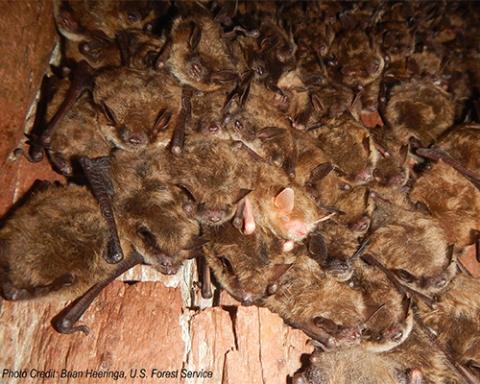Exploring Resistance to White-Nose Syndrome in Bat Populations of the Northern Forest: Exploring the Critical Disease-Genotype_Microbiome Link

North American cave-dwelling bat populations are facing major declines due to White Nose Syndrome (WNS), an invasive fungal disease caused by Pseudogymnoascus destructans. More than a decade into the explosion of WNS, little brown bats (Myotis lucifugus) are much reduced in number, but there are survivors. An individual bat’s susceptibility to WNS based on immune system genetics and fungal load and how the synergistic effect among these factors influence survival is understudied.
If bat immune systems are adapting to this disease, land managers can develop and implement strategies to ensure connectivity of the small, surviving populations to help recover genetic diversity needed to reduce their vulnerability to other stressors. NSRC researchers conducted a study to isolate potentially disease resistant genotypes of little brown bats to help explain the relationships among fungal communities, host genotype, and resistance to WNS.
They tested whether WNS produced selection by comparing allele diversity of an immune gene between persisting little brown bat populations to populations not yet exposed to the fungus. The surviving populations showed very low genetic diversity following rapid population declines, but there was no significant signal of WNS selection in the bat’s immune response for the immune gene. Sampling site and length of exposure were the major predictors explaining differences among the fungal community composition. Linking the spatial difference in the fungal community with spatial variation in allele diversity will allow further analysis into the complex relationship between an individual’s fungal load and immune response to WNS.
